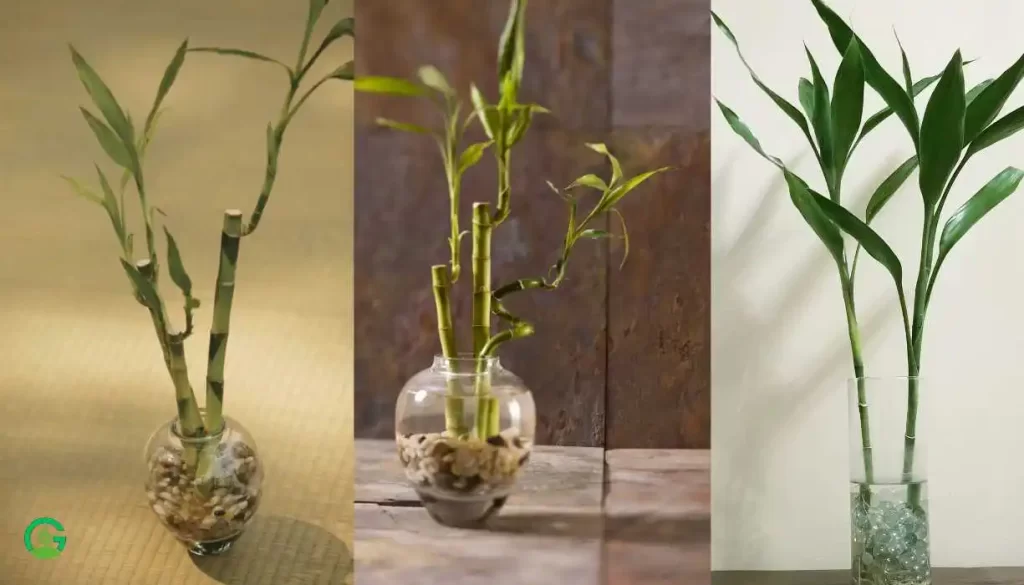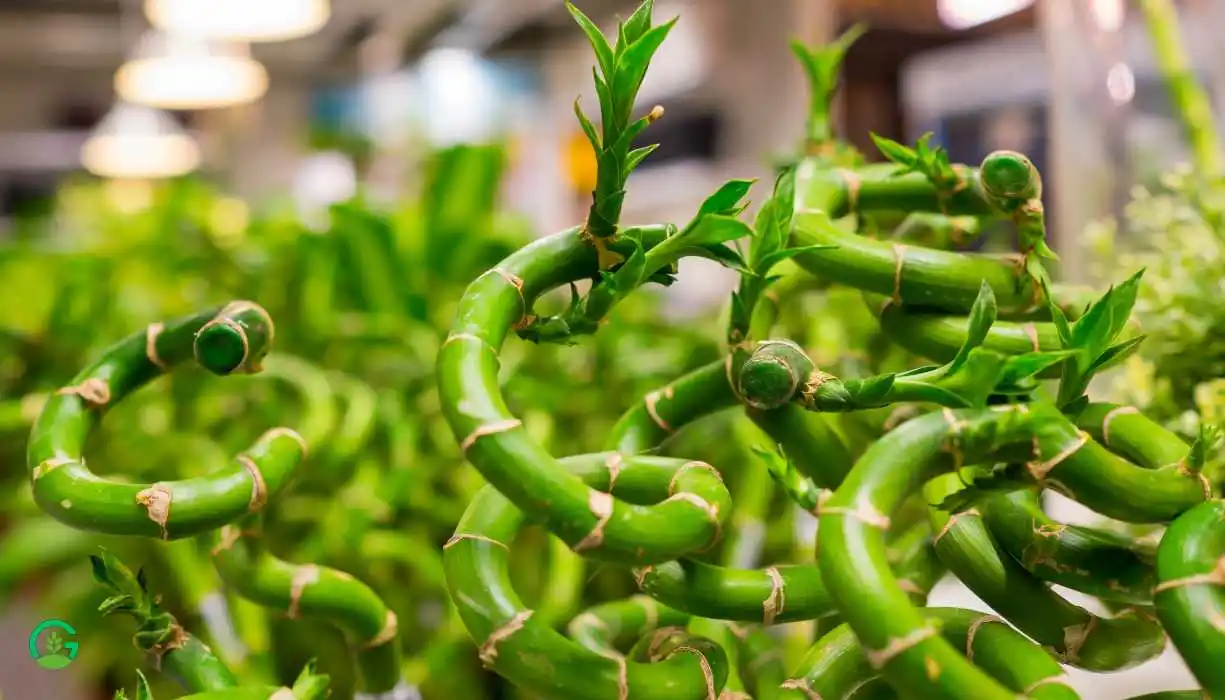Are you looking to add a touch of green to your home? A large indoor bamboo plant might be just what you need! These plants are not only beautiful but also easy to care for and incredibly versatile.
Let’s dive into everything you need to know about growing and maintaining a large indoor bamboo plant.
Large Indoor Bamboo Plant Table of Contents
Introduction
If you want to breathe new life into your indoor space, large indoor bamboo plants are a great choice. Their lush foliage and expansive presence can transform any room into a cool, green oasis.
But what exactly makes these plants so attractive, and how can you best care for them? let’s explore!
The Appeal of Large Indoor Bamboo Plants
Why choose a large indoor bamboo plant? First, their size makes a dramatic statement. Unlike smaller houseplants, a towering bamboo can become a focal point in your home.
Additionally, bamboo is a symbol of strength and resilience in many cultures. Its graceful, upright growth can bring a sense of tranquility and stability to your environment.
Aesthetics and Ambiance
Bamboo’s tall, slender canes and abundant leaves create a natural, tropical look. Imagine having a slice of an exotic forest right in your living room. It’s a surefire way to impress guests and create a peaceful retreat at home.
Easy Maintenance
One of the best things about bamboo is its low-maintenance nature. Even if you don’t have a green thumb, you can still enjoy the beauty of a thriving bamboo plant.

Choosing the Right Bamboo Variety
Not all bamboo plants are created equal, especially when it comes to indoor cultivation. Here are some popular varieties suitable for indoor growth:
Lucky Bamboo (Dracaena sanderiana)
Despite its name, lucky bamboo isn’t a true bamboo, but it looks very similar and is well-suited for indoor conditions. It’s also believed to bring good luck and positive energy.
Bamboo Palm (Chamaedorea seifrizii)
The bamboo palm is another great option, known for its feathery fronds and ability to thrive in low light.
Golden Bamboo (Phyllostachys aurea)
Golden bamboo is a true bamboo species with a beautiful golden hue. It requires more light and space but can be stunning in the right conditions.
Ideal Conditions for Indoor Bamboo Growth
For your bamboo to thrive indoors, you need to mimic its natural environment as closely as possible.
Light Requirements
Most bamboo varieties prefer bright, indirect light. Place your bamboo near a window where it can receive plenty of sunlight without being scorched.
Temperature and Humidity
Bamboo thrives in warm, humid conditions. Aim to keep the room temperature between 60-80°F and maintain a humidity level of around 50%.
Soil and Potting
Use well-draining soil mixed with sand or perlite to ensure proper drainage. Choose a pot that’s large enough to accommodate the bamboo’s root system and has drainage holes.

Planting Your Indoor Bamboo Plant
Planting bamboo is straightforward. Fill your pot with the prepared soil mix, place the bamboo plant in the center, and fill around it, pressing the soil gently to secure the plant.
Step-by-Step Planting Guide
- Choose the Right Pot: Ensure it’s large and has drainage holes.
- Prepare the Soil: Mix potting soil with sand or perlite.
- Plant the Bamboo: Place the plant in the pot and fill with soil.
- Water Thoroughly: Give it a good soak and let the excess water drain.
Watering Requirements
Bamboo plants like their soil to be consistently moist but not waterlogged. Overwatering can lead to root rot, so it’s crucial to strike a balance.
How Often to Water
Check the soil moisture regularly. Water the plant when the top inch of soil feels dry. In drier climates, you might need to water more frequently.
Feeding and Fertilization
Bamboo plants are not heavy feeders, but they do benefit from occasional fertilization.
Best Fertilizers for Bamboo
Use a balanced, slow-release fertilizer in the growing season (spring and summer). Organic options like compost tea can also be beneficial.

Pruning and Maintenance
Regular maintenance keeps your bamboo looking its best and prevents it from becoming unruly.
Pruning Tips
- Remove Dead Canes: Cut off any yellow or dead canes at the base.
- Trim for Shape: Prune back overgrown branches to maintain the desired shape and size.
Common Problems and Solutions
Like all plants, bamboo can face some issues. Here’s how to address common problems:
Yellow Leaves
This is often a sign of overwatering or poor drainage. Adjust your watering schedule and ensure the pot has proper drainage.
Pests
Spider mites and aphids are common pests. Use insecticidal soap or neem oil to treat infestations.
Decorating with Large Indoor Bamboo Plant
Bamboo plants are versatile and can fit into various decor styles.
Placement Ideas
- Living Room: Place a large bamboo in a corner to fill empty space.
- Office: A bamboo plant on your desk can boost productivity and reduce stress.
- Bathroom: Bamboo thrives in the humid environment of a bathroom.
Read More
Benefits of Having Large Indoor Bamboo Plant
There are numerous advantages to having a large indoor bamboo plant.
Air Purification
Bamboo is excellent at filtering toxins from the air, making your home healthier.
Stress Reduction
The sight of lush green bamboo can be incredibly soothing, helping to reduce stress and promote relaxation.
Bamboo in Feng Shui
In Feng Shui, bamboo is a symbol of good fortune and harmony. Placing bamboo in certain areas of your home can enhance positive energy.
Placement Tips
- East or Southeast: For health and family harmony.
- South: For fame and reputation.
Image | Product Name | Review | Price |
Pet Safety and Indoor Bamboo
If you have pets, you might wonder if bamboo is safe. Lucky bamboo (Dracaena sanderiana) is mildly toxic to cats and dogs, so it’s best to keep it out of their reach.
Safe Alternatives
Consider non-toxic varieties like the bamboo palm if you have curious pets.
Conclusion
A large indoor bamboo plant can transform your living space into a green oasis, providing beauty, tranquility, and numerous health benefits. With the right care, your bamboo plant will thrive and bring a touch of nature indoors.
Frequently Asked Questions (FAQs)
How often should I water my large indoor bamboo plant?
Water your bamboo plant when the top inch of soil feels dry. This usually means once a week, but it can vary based on your indoor climate.
What type of light is best for bamboo plants?
Bamboo plants thrive in bright, indirect light. Too much direct sunlight can scorch the leaves, while too little light can hinder growth.
Can I grow bamboo indoors all year round?
Yes, bamboo can be grown indoors year-round as long as you provide the right conditions, including adequate light, temperature, and humidity.
How can I prevent my bamboo plant from getting too tall?
Regular pruning helps control the height of your bamboo plant. Trim back the canes to the desired height, and remove any overgrown branches.
Are there any pests that commonly affect indoor bamboo plants?
Yes, common pests include spider mites and aphids. Treat infestations with insecticidal soap or neem oil and maintain proper plant care to prevent issues.





















2 thoughts on “Best Guide Large Indoor Bamboo Plant”